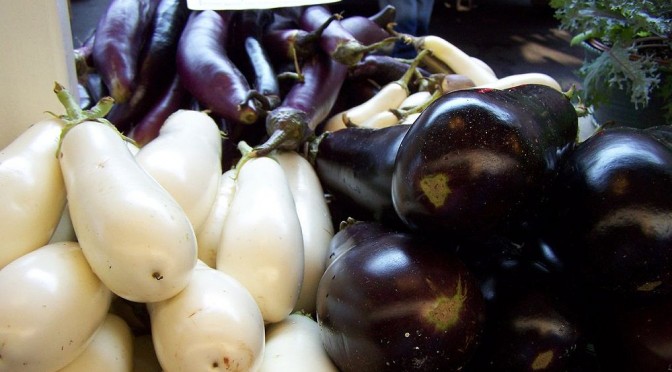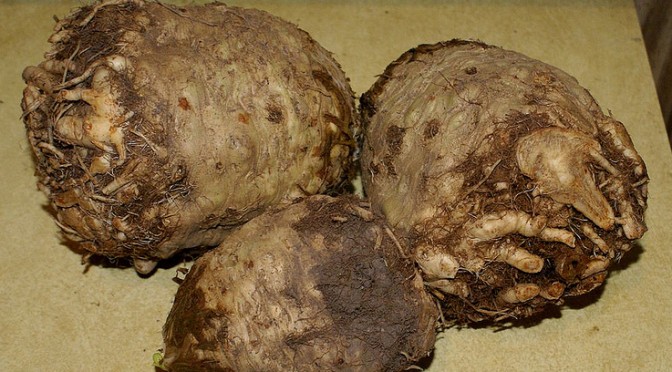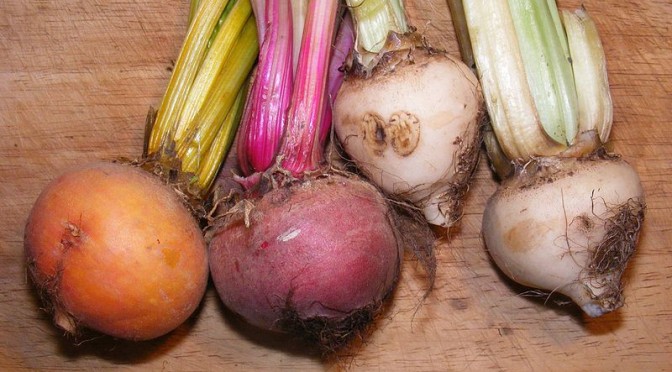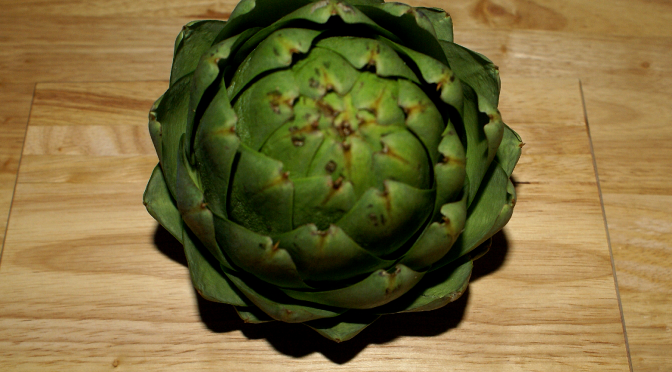Sorry about that! The demon eggplant made me do it. Read on…
You might think that eggplant originated in the Mediterranean region since it is a very popular vegetable in Italy, but this vegetable grew wild in India. The Chinese began cultivating it in the 5th century B.C. and from there it spread to Africa some time before the Middle Ages then migrated to Italy. Because the early variety was very bitter, the plant didn’t gain a lot of popularity and some people blamed their ills on eating it, even suggesting that it caused insanity, leprosy and cancer. As the vegetable became more cultured and lost much of its bitterness thanks to modified varieties in the 18th century, it grew into favor with chefs and from them on it was all Eggplant Parmesan and Moussaka. These days, the top growers are Italy, Turkey, Egypt, China and Japan.
An early variety of the plant was white and resembled a hen or goose egg prompting the name “eggplant”. A variety of nightshade, the fruit is white, green or purple and only the fruit is eaten. Since it is a nightshade, the leaves may be toxic and can certainly affect allergies. In England and other parts of Europe, the eggplant is known as aubergine, in Asia, it is called brinjal and other common names include melongene, garden egg and guinea squash. Whatever you call it, the eggplant is a much more diversified vegetable than just the uses you might expect. It is used in all types of cooking and reading about it has certainly inspired me to want to expand the way I use it.
I planted an Asian variety in my garden two years ago and it produced about four eggplants that were very good and mild-flavored. I think I’ll try it again this year if we have enough water to actually plant a garden. The drought affects Nevada also.
Try out this recipe on Skinny Girl that is both low carb and delicious.
Italian Style Stuffed Low Carb Eggplant
And here’s my recipe for…

Eggplant Pizza
by Rene Averett
1/2 Eggplant, peeled and sliced into 1/2″ rounds
1 Egg,
2 tablespoons Almond Flour
2 tablespoon Bread Crumbs
2 tablespoons Parmesan Cheese
1 teaspoon ground Oregano
Salt and Pepper to taste
1/4 lb. Seasoned Sausage
1/4 cup Bell Pepper, chopped
2 tablespoons Onion, chopped
1 cup Mozzarella Cheese, shredded
1/2 cup Pasta Sauce
Peel about 2 1/2 inches of the large part of the eggplant. Cut off bottom of the eggplant, then slice off four 1/2 inch thick rounds. Lightly salt the eggplant slices.
Preheat oven to 365 degrees. Prepare a baking pan by spraying with cooking spray or put a silicone mat or parchment paper on it.
Put the egg and salt and pepper to taste in a shallow bowl or pan and beat. Put the bread crumbs and almond flour in another bowl and add the Parmesan Cheese and oregano. Dip an eggplant slice into the egg, then dredge in the flour/bread crumbs mixture, pressing it into the eggplant. Place on the prepared pan. Repeat with each slice of eggplant.
Bake in the oven for 20 to 25 minutes until lightly browned. Raise the temperature to 385 degrees.
Meanwhile, lightly brown the sausage. Don’t overcook as it will cook a little in the oven. When the eggplant slices are done, spread two tablespoons of pasta sauce on each slice, then top with sausage, onions and peppers. Sprinkle the cheese over the top and add a dash of crushed chili peppers, if desired. Return to oven and bake another 10 to 15 minutes until the cheese is lightly toasted.
Serve with a salad to complete your meal.
Makes 4 slices.
Nutrition Info per slice
Calories: 250 Fat: 17.0 g Net Carbs: 6.6 g Protein: 15.1 g
Learn more from my references for this blog, which include Wikipedia, The World’s Healthiest Foods and Care2.com
Top Photo Credit: “Three Types of Eggplant” by J.E. Fee – originally posted to Flickr as Three Types of Eggplant. Licensed under CC BY 2.0 via Wikimedia Commons –








